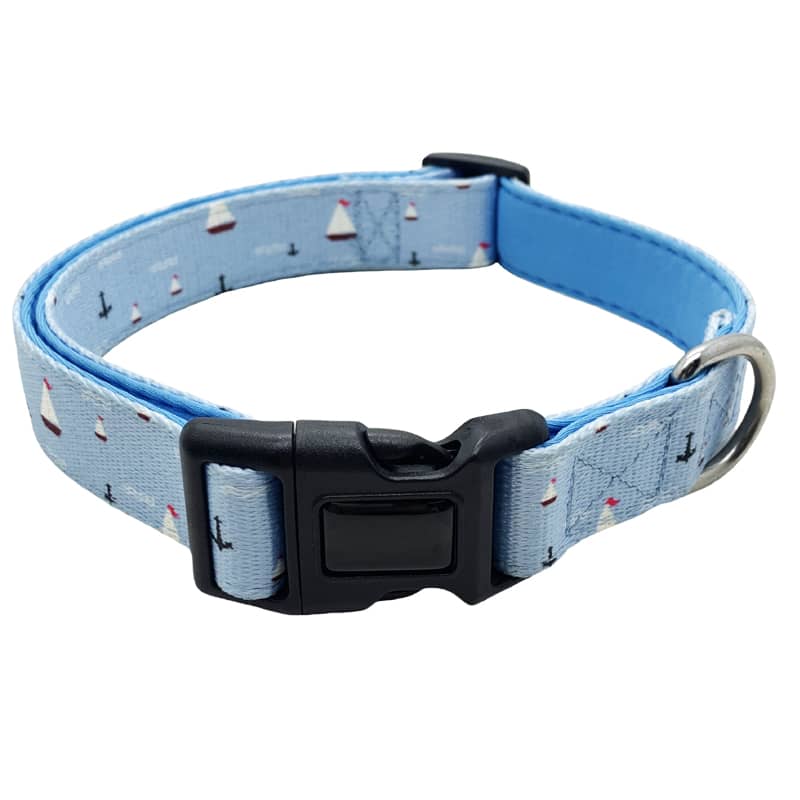
🚨 Pet Industry Crisis at a Glance
| Critical Gap | Impact Scale | Market Opportunity |
|---|---|---|
| Affordability Crisis | 52% skip veterinary care | $82 billion underserved market |
| Supply Chain Issues | 60% longer lead times | Domestic sourcing demand surge |
| Transparency Gap | 90% want ingredient info | Premium pricing for transparent brands |
| Access Barriers | 21 million households underserved | Massive untapped demographics |
| Tech Integration | $12.5 billion growing market | 13.87% annual growth rate |
I’am Jessica, founder of Bestone—a leading pet product manufacturer with 16 years of industry experience—I’ve witnessed firsthand how critical gaps in the pet industry create both challenges and massive opportunities. Moreover, the $157 billion pet industry continues to grow, yet significant portions of pet owners remain underserved. Today, we’ll explore what’s truly lacking in this booming market and, consequently, how businesses can capitalize on these gaps.
The $157 Billion Opportunity: Why 52% of Pet Owners Are Underserved
The Affordability Crisis Driving Market Disruption
The most pressing issue facing the pet industry today is undoubtedly the affordability crisis. Specifically, veterinary care costs have skyrocketed 60% since 2014—dramatically outpacing general inflation. As a result, an alarming 52% of U.S. pet owners have skipped or declined needed veterinary care in the past year.
Furthermore, the average cost of a single veterinary visit has jumped from $147 in 2024 to $200 in 2025. This represents a concerning trend that creates a two-tiered system where premium care is reserved for affluent pet owners while millions of pets lack basic healthcare access.
Industry Insight: According to recent market research, “customization and affordable alternatives are the top concerns for US-based pet brand owners in 2025.” This trend reflects the growing demand for accessible pet care solutions that don’t compromise on quality.
Corporate Consolidation’s Role in Rising Costs
Private equity consolidation has fundamentally changed the pet industry landscape. Notably, corporations now control nearly 50% of U.S. veterinary clinics, up from just 8% in 2011. Consequently, this consolidation has led to aggressive pricing strategies that prioritize profit margins over accessibility.
Additionally, Mars Veterinary Health controls nearly half of the 6,600 corporate-owned pet clinics, including major chains like VCA Animal Hospitals and Banfield Pet Hospital. Therefore, this concentration of market power has reduced competition and, ultimately, driven prices higher.
Supply Chain Vulnerabilities: The Hidden Profit Killer
International Dependencies Creating Business Risks
The pet industry faces significant supply chain disruptions that directly impact product availability and pricing stability. Specifically, pet retailers report 60% longer lead times on overseas goods, particularly for essential items like dog harnesses, toys, and accessories.
Moreover, volatile ingredient costs affect treat and food availability while unpredictable vendor relationships force retailers to adapt constantly. As a result, businesses must order in smaller quantities more frequently, monitor vendor performance closely, and spend valuable time finding substitute products.
Manufacturing Reality: There is a lack of standardization and consistent quality control for many pet products, especially non-food items such as toys, grooming tools, and accessories. This creates opportunities for manufacturers who prioritize quality consistency.
The Domestic Sourcing Opportunity
International trade conflicts and transportation bottlenecks have created urgent demand for domestic alternatives. Consequently, the industry lacks robust local sourcing options for perishable and specialty pet products. Therefore, manufacturers who can provide reliable domestic supply chains gain significant competitive advantages.
Furthermore, businesses are increasingly seeking suppliers who offer custom solutions and shorter lead times. This shift creates substantial opportunities for agile manufacturers who understand local market demands.

Custom Dog Harnesses
Tailored solutions for brand differentiation

Eco-Friendly Apparel
Meeting transparency demands

Quality-Controlled Collars
Standardized manufacturing excellence
The Transparency Gap: 90% Demand What 10% Deliver
Consumer Demands Outpacing Industry Response
An overwhelming 90% of pet owners want transparency in ingredient sourcing and manufacturing processes. However, the pet industry has been slow to respond to these demands. Specifically, 68% of U.S. consumers feel strongly about ingredient transparency, while 43.6% prioritize their pet’s food health over their own.
Despite these clear consumer preferences, many pet companies still use vague labeling and non-specific ingredient descriptions. Consequently, this creates a significant trust gap between consumers and brands that smart manufacturers can address.
“Transparency isn’t just a trend—it’s becoming a requirement for premium pet brands. Companies that embrace ingredient traceability and manufacturing transparency will dominate the next decade.” — Dr. Sarah Mitchell, Pet Industry Analyst
The Sustainability and Ethics Connection
Furthermore, 77% of consumers would stop buying from companies that mislead them with sustainability claims. Therefore, authentic transparency becomes crucial for long-term brand survival. Additionally, there is limited integration of sustainability in pet product sourcing, packaging, and ingredient labeling—despite growing consumer demand.
Companies offering sustainable pet supplies and clear sourcing information can command premium pricing. Moreover, this represents a massive opportunity for manufacturers who prioritize ethical practices and transparent communication.
Untapped Markets: Serving 21 Million Underserved Households
Geographic Accessibility Barriers
The U.S. faces a critical situation with 21 million households living in areas with limited access to veterinary services. Additionally, 243 rural veterinary shortage areas exist across 46 states—the highest number ever recorded.
This geographic isolation creates unique opportunities for businesses that can deliver products and services to underserved communities. Specifically, essential pet accessories and preventive care products become even more valuable when professional veterinary care is scarce.
Demographic Insight: Many pet owners struggle with aging/geriatric pet care, and there is insufficient focus on services and products tailored for senior pets’ unique health and mobility issues. This represents a rapidly growing market segment.
Accessibility for Vulnerable Populations
Elderly pet owners (55% of adults ages 50-80 own pets) face particular challenges due to transportation limitations and physical constraints. Meanwhile, the industry largely lacks tailored solutions for this demographic, creating substantial opportunities for inclusive product design.
Similarly, pet owners with disabilities encounter communication barriers and physical accessibility issues that most veterinary practices don’t adequately address. Therefore, businesses that prioritize accessibility can capture significant underserved market segments.
Innovation Deficits: Where Technology and Training Fall Short
Pet Technology Adoption Gaps
While the pet technology market has reached $12.5 billion in 2025 and grows at 13.87% annually, significant adoption barriers remain. Specifically, consumer education requirements for new technology create substantial obstacles to widespread acceptance.
Moreover, pet tech and digital adoption spaces—including pet wearables, real-time health monitoring, and lost-pet recovery platforms—remain under-leveraged. Consequently, this leaves enormous opportunities for innovation and user-friendly solutions.
Additionally, affordability barriers limit access to tech solutions for cost-conscious consumers. Therefore, the industry needs more accessible, user-friendly AI-powered pet products and telemedicine solutions.
Behavioral Training Accessibility Crisis
Pet behavioral problems are widespread, yet access to quality training remains expensive and limited. Specifically, professional training costs often exceed $250 per hour in urban areas, making expert help unaffordable for most pet owners.
Furthermore, pet owners face information overload and unreliable advice regarding pet health, nutrition, and behavior. There is a significant shortage of clear, trusted guidance that addresses breed-specific needs and modern training approaches. As a result, many owners rely on outdated techniques despite evidence supporting positive reinforcement methods.
Market Gap: Services and products often lack specialization or personalization, such as breed-specific care, senior-pet needs, and condition-specific treatments. This creates opportunities for targeted product development and specialized accessories.
The Insurance and Care Access Crisis: Creating Alternative Solutions
Insurance Penetration Problems
Despite one in three pets requiring emergency veterinary care annually, less than 5% of pets have insurance coverage. This creates a dangerous protection gap that leaves pet owners vulnerable to unexpected expenses.
Additionally, pet insurance premiums have increased dramatically—in some cases up to 224% within six years. Consequently, even when insurance exists, it often becomes unaffordable for middle-income families who need it most.
Preventive Care Through Better Products
Significant gaps exist in pet owner adherence to preventive care protocols. For example, 46% of dog owners and 51% of cat owners forget to administer flea and tick prevention regularly. Therefore, products that simplify preventive care can address this critical gap.
Moreover, 22% of pet owners skip diagnostics while 18% avoid preventive care like vaccines due to cost concerns. Consequently, durable, long-lasting products that reduce replacement costs become increasingly valuable.
“The future belongs to pet companies that create products enabling preventive care at home. When professional veterinary access is limited, quality accessories become healthcare tools.” — Mark Rodriguez, Veterinary Business Consultant
Conclusion: Action Steps for Industry Players
The pet industry’s critical gaps represent unprecedented opportunities for innovative businesses. Specifically, the affordability crisis affecting 52% of pet owners creates demand for cost-effective solutions. Meanwhile, supply chain vulnerabilities highlight the need for reliable domestic manufacturing partners.
Furthermore, transparency gaps offer competitive advantages for companies that embrace authentic communication about sourcing and sustainability. Additionally, serving underserved demographics—from rural communities to elderly pet owners—opens vast untapped markets.
Final Industry Reality: The market is highly dependent on consumer discretionary spending, making it vulnerable to economic downturns and inflationary pressure. However, businesses that address fundamental gaps in affordability, accessibility, and transparency will thrive regardless of economic conditions.
Ready to capitalize on these industry gaps? At Bestone, we’ve spent 16 years understanding these challenges and developing solutions. Our ODM and OEM services help brands create products that address real market needs—from sustainable materials to accessibility-focused designs.
Whether you’re looking to develop custom solutions for underserved markets or create transparent, quality-controlled products that build consumer trust, we’re here to help. Contact us today to discuss how we can turn these industry gaps into your competitive advantages.


